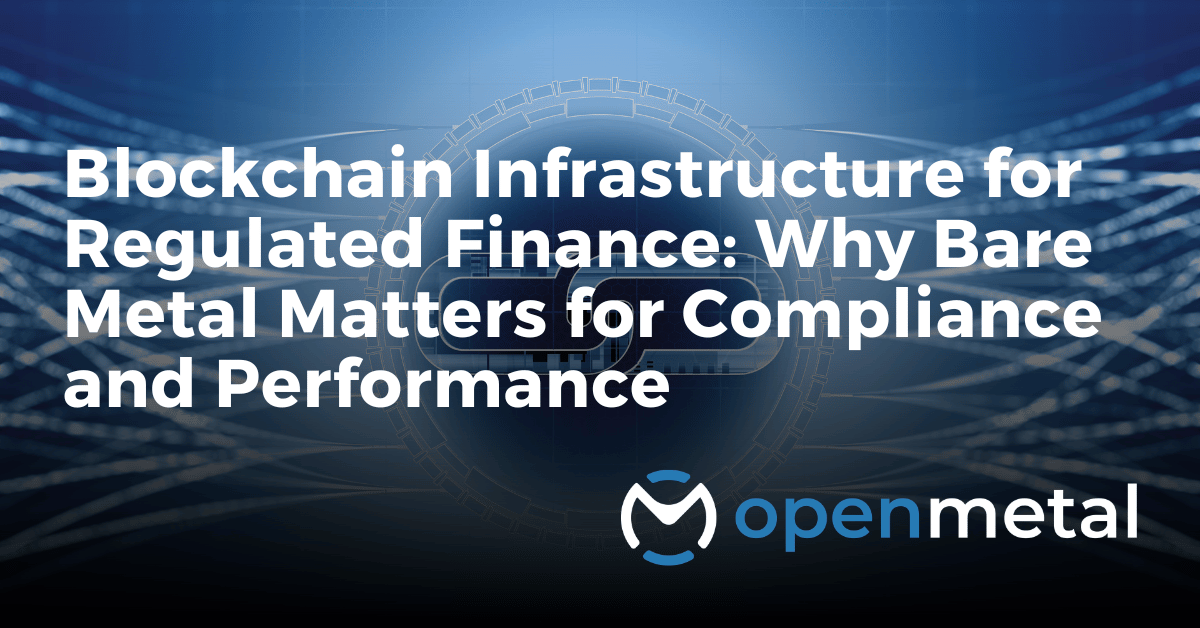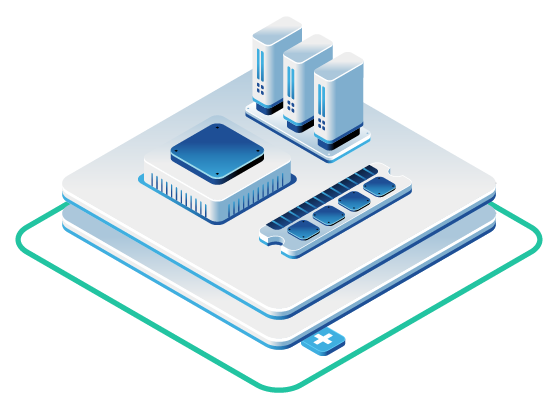
When you’re deploying blockchain infrastructure in regulated finance, you face a unique challenge: balancing the innovation potential of distributed ledger technology with the stringent compliance requirements of financial services. Your infrastructure choices directly impact whether you can meet both goals.
For platform engineers and CTOs evaluating blockchain infrastructure for banks, trading firms, and insurance companies, the decision often comes down to control versus convenience. Here’s why bare metal servers and hosted private cloud solutions have emerged as the preferred foundation for compliant blockchain hosting for finance.
The Compliance Challenge in Enterprise Blockchain
Financial institutions implementing blockchain technology must navigate complex regulatory requirements while maintaining performance standards that traditional infrastructure struggles to deliver. According to Deloitte’s analysis of security controls for blockchain applications, regulated entities need infrastructure that provides:
- Complete audit trails for all system access and changes
- Physical and logical data isolation
- Demonstrable security controls at every layer
- Guaranteed data residency and sovereignty
Public cloud environments, while convenient, introduce shared responsibility models that can complicate compliance certification. When auditors ask who has access to the underlying infrastructure, “multiple cloud provider employees” isn’t the answer they want to hear.
Why Bare Metal Blockchain Infrastructure Solves Regulatory Challenges
Performance Without Compromise
Running blockchain validator nodes or processing high-frequency trading transactions requires predictable, low-latency performance. Virtualization layers and multi-tenant environments introduce variability that can cost millions in missed opportunities.
OpenMetal’s blockchain infrastructure solutions deliver:
- Direct hardware access: No hypervisor overhead means consistent sub-millisecond latency
- Dedicated resources: Your CPU cycles, memory, and network bandwidth are yours alone
- Predictable performance: No noisy neighbor effects or resource contention
- Hardware-level optimization: Fine-tune kernel parameters and network stacks for blockchain workloads
For validator workloads where every millisecond counts, these performance characteristics translate directly to profitability.
Security Through Isolation
Blockchain infrastructure security in regulated environments goes beyond standard cybersecurity practices. You need demonstrable isolation and control at every level.
With bare metal servers, you get:
- Physical isolation: Your hardware runs only your workloads
- Network segmentation: Deploy private networks with custom security policies
- Encryption control: Implement your own key management without provider dependencies
- Compliance flexibility: Meet specific regulatory requirements without platform limitations
The Linux Foundation’s Hyperledger case studies demonstrate how enterprises use dedicated infrastructure to build permissioned blockchain networks that satisfy regulatory scrutiny.
Confidential Computing for Sensitive Workloads
Modern blockchain applications in finance often handle sensitive data that requires protection even during processing. Confidential computing on bare metal provides hardware-based security guarantees that go beyond traditional encryption.
Technologies like Intel SGX and AMD SEV create secure enclaves where:
- Transaction data remains encrypted during processing
- Cryptographic keys never exist in plaintext memory
- Even system administrators cannot access protected data
- Audit logs prove data protection compliance
Real-World Applications: Beyond Cryptocurrency
While cryptocurrency trading might be the most visible use case, blockchain workloads on bare metal extend far beyond digital assets. Financial institutions deploy blockchain infrastructure for:
Asset Tokenization
Banks are digitizing traditional assets on blockchain platforms. These systems require:
- High-throughput transaction processing
- Regulatory-compliant data handling
- Integration with existing banking systems
- Audit-ready infrastructure
Bare metal servers provide the performance and control needed to tokenize everything from real estate to carbon credits while maintaining regulatory compliance.
Securities Settlement
Major financial institutions are reducing settlement times from days to minutes using blockchain technology. These systems must handle:
- Burst transaction volumes during market events
- Real-time reconciliation across multiple parties
- Regulatory reporting requirements
- Zero-downtime operation
The predictable performance of dedicated infrastructure ensures these systems meet SLAs even during peak trading periods.
Privacy-Preserving Transactions
Emerging technologies enable private transactions on public blockchains. These computationally intensive operations require:
- Dedicated CPU resources for cryptographic operations
- Low-latency communication between nodes
- Secure key management infrastructure
- Compliance with privacy regulations
Bare metal infrastructure provides the computational power and security isolation these advanced protocols demand.
Overcoming Enterprise Blockchain Limitations
CoinDesk’s analysis of enterprise blockchain challenges identifies infrastructure limitations as a key barrier to adoption. Common issues include:
- Scalability constraints: Shared infrastructure limits transaction throughput
- Latency variability: Virtualization overhead creates unpredictable performance
- Compliance gaps: Multi-tenant environments complicate audit requirements
- Integration challenges: Limited control over network and security configurations
Bare metal infrastructure addresses each of these limitations by providing complete control over the hardware and software stack.
Building Your Blockchain Infrastructure Strategy
If you’re evaluating infrastructure options for blockchain infrastructure for banks and trading firms, consider this approach:
- Map compliance requirements: Identify specific regulations (SOC 2, PCI-DSS, MiFID II) and their infrastructure implications
- Benchmark performance needs: Test your blockchain applications under realistic load conditions to determine resource requirements
- Design for security: Plan network architecture, encryption strategies, and access controls from the ground up
- Calculate true costs: Compare not just infrastructure pricing but also compliance overhead and opportunity costs of performance limitations
- Plan for growth: Ensure your infrastructure can scale with transaction volumes without architectural changes
The OpenMetal Advantage
OpenMetal combines the performance benefits of bare metal with the operational simplicity of managed services. Our transparent pricing model means no surprise costs as you scale your blockchain infrastructure.
Key advantages for regulated blockchain workloads include:
- Dedicated hardware: Full control over compute, storage, and network resources
- Compliance support: Infrastructure designed for audit and certification requirements
- Performance guarantees: Consistent low latency for time-sensitive transactions
- Flexible deployment: Choose between self-managed bare metal or fully managed private cloud
- Expert support: Blockchain-specific expertise to optimize your infrastructure
Whether you’re building a validator network, deploying enterprise DLT, or creating secure blockchain infrastructure for fintech applications, OpenMetal provides the foundation for compliant, high-performance blockchain systems.
Moving Forward with Confidence
Deploying blockchain technology in regulated finance requires infrastructure that delivers performance, security, and compliance without compromise. Bare metal servers and hosted private clouds provide the control and capabilities that financial institutions need to innovate while meeting regulatory requirements.
Your next step? Evaluate your specific compliance requirements, performance needs, and security objectives. Then explore how dedicated infrastructure can help you build blockchain systems that satisfy both your innovation goals and your auditors.
Ready to discuss your blockchain infrastructure needs? OpenMetal’s team specializes in helping financial services organizations deploy enterprise blockchain hosting solutions that meet the unique demands of regulated environments.
Read More on the OpenMetal Blog


































